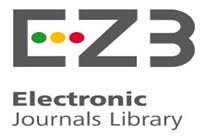IJSEA Archive (Volume 4, Issue 3)
International Journal of Science and Engineering Applications (IJSEA) (Volume 4, Issue 3 May-June 2015)
Modified Page Rank Model in Investigation of Criminal Gang
Keywords: Page Rank ;Markov Chain; Criminal Gangs; Biological Model; Algorithm; Markov Chain
In this paper, we consider a criminal investigation on the collective guilt of part members in a working group. Assuming that the statistics we used are reliable, we present the Page Rank Model based on mutual information. First, we use the average mutual information between non-suspicious topics and the suspicious topics to score the topics by degree of suspicion. Second, we build the correlation matrix based on the degree of suspicion and acquire the corresponding Markov state transition matrix. Then, we set the original value for all members of the working group based on the degree of suspicion. At the last, we calculate the suspected degree of each member in the working group. In the small 10-people case, we build the improved Page Rank model. By calculating the statistics of this case, we acquire a table which indicates the ranking of the suspected degree. In contrast with the results given in this issue, we find these two results basically match each other, indicating the model we have built is feasible. In the current case, firstly, we obtain a ranking list on 15 topics in order of suspicion via Page Rank Model based on mutual information. Secondly, we acquire the stable point of Markov state transition matrix using the Markov chain. Then, we build the connection matrix based on the degree of suspicion and acquire the corresponding Markov state transition matrix. Last, we calculate the degree of 83 candidates. From the result, we can see that those suspicious are on the top of the ranking list while those innocent people are at the bottom of the list, representing that the model we have built is feasible. When suspicious topics and conspirators changed, a relatively good result can also be obtained by this model. In the current case, we have the evidence to believe that Dolores and Jerome, who are the senior managers, have significant suspicion. It is recommended that future attention should be paid to them. The Page Rank Model, based on mutual information, takes full account of the information flow in message distribution network. This model can not only deal with the statistics used in conspiracy, but also be applied to detect the infected cells in a biological network. Finally, we present the advantages and disadvantages of this model and the direction of improvements.
Haveliwala, T. (1999) Efficient Computation of PageRank. Technical Report. Stanford.
Battiti, R.(1994)Using mutual information for selecting features in supervised neural net learning.
Terry. (1999) The Page Rank Citation Ranking: Bringing Order to the Web. Technical Report. Stanford InfoLab.
Jackendoff, Ray S.(1972) Semantic Interpretation in Generative Grammar.
Xing, W., Ghorbani A. (2004) Weighted Page Rank algorithm, Communication Networks and Services Research. Proceedings.
Catherine Benincasa (2006) Page Rank Algorithm.
John F. Sowa (1991) Principles of Semantic Networks.Alexander Kraskov, Harald Stogbauer, and Peter Grassberger (2004) Estimating mutual information.
@article{Ting04031005,
title = " Modified Page Rank Model in Investigation of Criminal Gang ",
journal = "International Journal of Science and Engineering Applications (IJSEA)",
volume = "4",
number = "3",
pages = "100 - 104",
year = "2015",
author = " Ting LU,Xudong Wang,Qi Gao,Cong LIU ",
}










